Information technology support is essential for small and medium enterprises (SMEs) to ensure that their operations run smoothly. IT support provides assistance in maintaining technology systems, troubleshooting issues, and optimizing operations. With the growing reliance on technology, SMEs benefit greatly from efficient IT support services that can enhance productivity and minimize downtime.
Investing in reliable IT support allows SMEs to focus on their core business functions. By delegating technical issues to experts, staff can dedicate more time to tasks that directly impact growth and customer satisfaction. Additionally, effective IT support can help secure sensitive data, ensuring compliance with industry regulations.
Hardware Issues
IT support often faces significant challenges with hardware issues in small and medium enterprises (SMEs). Understanding how to troubleshoot these problems effectively can minimize downtime and ensure smooth operations.
5 Troubleshooting Hardware Problems
Troubleshooting hardware issues involves a systematic approach to identify and resolve problems efficiently. Common steps include:
- Identifying the Symptoms: Recognizing the specific nature of the problem, such as unusual noises, failure to boot, or connectivity issues.
- Systematic Testing: Testing each hardware component, including the power supply, RAM, hard drives, and peripherals, to isolate the fault.
- Checking Connections: Ensuring that all cables and components are securely connected.
- Utilizing Diagnostic Tools: Employing built-in diagnostic tools or third-party software to assess hardware performance.
- Consulting Documentation: Referring to manufacturer manuals and support documentation for guidance on problem resolution.
5 Common Hardware Support Requests
As SMEs seek IT support, some hardware-related requests frequently arise. Among the most common requests are:
| Request Type | Description |
| Hardware Repair | Services for fixing broken components, such as hard drives, monitors, or printers. |
| Component Replacement | Requests for replacing non-functional hardware parts, like RAM or graphics cards. |
| System Upgrades | Upgrading existing hardware to improve performance or meet increased demands. |
| Peripheral Setup | Assistance with installing and configuring external devices, such as printers or scanners. |
| Network Hardware Support | Support for issues with routers, switches, and firewalls. |
These common hardware support requests highlight the challenges SMEs face and the essential role IT support plays in resolving these issues efficiently. Addressing hardware problems effectively helps maintain productivity and ensures that systems run smoothly.
Software Challenges
Software issues are among the prevalent problems faced by SMEs, often requiring immediate attention to maintain business operations. These challenges can hinder productivity and impact overall efficiency, necessitating effective IT support services.
Dealing with Software Glitches
Software glitches can manifest in various forms, such as application crashes, slow performance, and error messages. Identifying the root cause of these issues is essential for a timely resolution. Common reasons for software glitches include compatibility problems, outdated software, and insufficient system resources.

Timely updates and routine maintenance play a crucial role in preventing software issues. IT support teams often advise maintaining current software versions, ensuring drivers are updated, and regularly clearing cache and temporary files. Moreover, training employees on how to spot and report software issues can facilitate swift problem resolution.
| Software Issue | Description | Recommended Action |
| Application Crash | The program unexpectedly closes | Restart the application and check for updates |
| Slow Performance | Applications running sluggishly | Close unused programs and free up system resources |
| Error Messages | Notifications of issues | Document the error and consult IT for support |
5 Common Software Support Requests
Organizations often encounter specific software-related support requests. Understanding these requests helps IT teams prioritize and streamline their responses.
| Common Support Request | Description | Frequency (%) |
| Software Installation | Request to install new applications or updates | 30% |
| Password Reset | Assistance with forgotten or locked user accounts | 25% |
| Software Configuration Issues | Problems with settings or preferences not functioning correctly | 15% |
| Data Recovery Requests | Need for restoring lost or damaged data | 10% |
| Licensing and Activation Help | Questions regarding software licenses or product activations | 20% |
Categorizing these software challenges and requests, IT support teams can enhance their service delivery and resolve issues more effectively. Understanding the most common IT support requests allows SMEs to allocate resources adequately and improve their operational workflows.
Network and Connectivity Problems
Regarding IT support, network and connectivity issues are among the most frequent concerns for small and medium-sized enterprises (SMEs). These challenges can disrupt workflows and impact productivity, making effective solutions essential.
Addressing Network Issues
Network issues can arise from a variety of sources, including hardware failures, software configurations, and external factors such as environmental conditions. Identifying the root cause of network problems is crucial for effective troubleshooting.
Common steps for addressing network issues include:
- Assessing the Network Configuration: Checking routers, switches, and firewalls to ensure they are correctly set up.
- Testing Connection Speeds: Measuring internet speeds and connectivity using diagnostic tools.
- Checking Cables and Connections: Inspecting physical connections for damage or disconnection.
- Monitoring Network Traffic: Utilizing tools to detect peaks in traffic that may cause slowdowns or interruptions.
- Reviewing Firewall Settings: Ensuring settings do not inadvertently block necessary communications.
Systematically addressing these areas, IT support professionals can effectively diagnose and rectify network challenges.
5 Common Network Support Requests
Below is a table summarizing the most frequent network-related support requests received by IT departments in SMEs:
| Support Request | Description | Frequency (%) |
| Internet Connectivity Issues | Problems related to accessing the internet | 30 |
| Slow Network Speed | Decreased performance impacting productivity | 25 |
| VPN Connection Troubles | Issues with remote access via Virtual Private Network (VPN) | 20 |
| Wi-Fi Connectivity Problems | Issues with wireless access points and configurations | 15 |
| Network Printer Issues | Troubleshooting printer connectivity on the network | 10 |
These requests highlight the crucial areas where IT support plays a significant role in maintaining operational efficiency. By understanding these common issues, SMEs can prioritize their IT needs and seek timely assistance to minimize disruptions.
Cybersecurity Concerns
In the digital age, protecting sensitive information has become paramount for small and medium-sized enterprises (SMEs). These organizations often face a variety of cyber threats, making robust cybersecurity measures essential.
Protecting Against Cyber Threats
SMEs are frequently targeted by cybercriminals due to their limited resources and security measures. Therefore, they must prioritize protecting their systems and data. This involves implementing several key strategies:
- Regular Software Updates: Keeping software and security systems updated to patch vulnerabilities.
- Employee Training: Educating employees about cybersecurity risks, such as phishing attacks and social engineering tactics.
- Firewalls and Anti-virus Software: Utilizing firewalls and anti-virus tools to defend against unauthorized access and malware.
- Data Backup Solutions: Establishing regular data backup protocols to prevent data loss in case of an attack.
- Access Control: Implementing strict access controls to limit who can access sensitive information and systems.
These protective measures can significantly reduce the risk of cybersecurity incidents.
5 Common Cybersecurity Support Requests
As SMEs strive to enhance their cybersecurity, several common support requests often arise. These requests reflect the typical challenges faced by organizations in safeguarding their digital assets.
| Support Request | Description |
| Assistance with Malware Removal | Help in identifying and removing malware from systems. |
| Password Management Support | Guidance on creating strong passwords and managing access. |
| Firewall Configuration | Setup and management of firewall settings and policies. |
| Security Policy Development | Assistance in developing and implementing cybersecurity policies. |
| Incident Response Planning | Help in creating a plan to respond to potential cyber threats. |
Addressing these common support requests, SMEs can better protect themselves against cyber threats and enhance their overall security posture.
Data Management Assistance
Efficient data management is crucial for small and medium enterprises (SMEs) as it directly impacts decision-making and overall business operations. This section focuses on managing and retrieving data, as well as outlining common support requests that arise in this area.
Managing and Retrieving Data
Data management involves organizing, storing, and securing digital information. SMEs often face challenges in maintaining data integrity and efficient access to important files. Key aspects of data management include:
- Data Organization: Structuring data in a logical manner, making it easier to find and utilize.
- Data Storage Solutions: Selecting appropriate storage methods, such as cloud services or on-premises systems.
- Backup and Recovery: Implementing strategies to protect data against loss or corruption.
- Access Control: Ensuring only authorized personnel can access sensitive information.
If data is properly managed, it becomes simpler to retrieve when needed, enhancing productivity and workflow.

5 Common Data Support Requests
SMEs frequently seek assistance with various data management challenges. The following table outlines some of the most common data support requests:
| Support Request | Description |
| Data Recovery | Assistance with restoring lost or corrupted data from backups or other sources. |
| Data Backup Setup | Help in establishing a reliable backup system to prevent data loss. |
| Database Management | Support with organizing, updating, and maintaining databases for efficiency. |
| Data Migration | Guidance on transferring data from one system to another smoothly and securely. |
| Access Management | Support in setting up and managing user permissions to protect sensitive information. |
Maximize Your IT Potential with LK Tech
Understanding these common IT support requests helps SMEs recognize their data management needs and get the right solutions quickly. Since data is the backbone of modern business, resolving these issues effectively enhances both efficiency and security. At LK Tech, we provide top-notch IT support tailored to your unique needs, ensuring seamless operations and reliable protection for your systems. If you're looking for a trusted IT company in Cincinnati, don’t hesitate to reach out to us today and experience expert support that keeps your business running smoothly.


